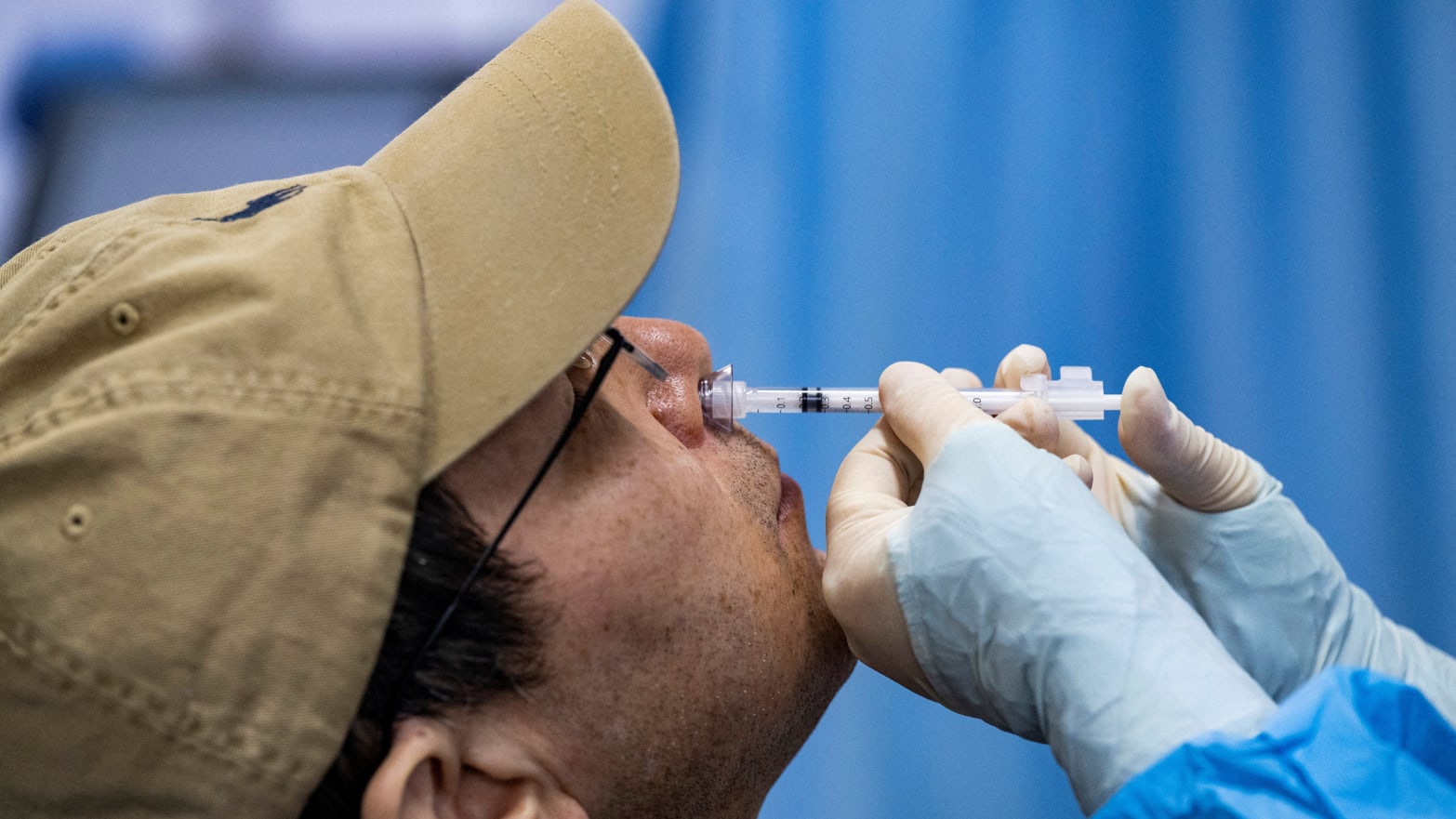The nose knows, as the saying goes, and a new study suggests this may be the case for immunologic knowledge against the COVID-19 virus, too. A team of German researchers gave hamsters an intranasal vaccine for COVID-19, finding the nose spray outperformed mRNA shots in protecting the hamsters from the Delta variant. They see potential for the vaccine as a booster, particularly against wily future COVID variants that are beginning to escape the immune system.
The research was published on April 3 in the journal Nature Microbiology.
Existing COVID-19 shots that require a jab in the arm (like those made by Moderna, Pfizer, and Johnson & Johnson vaccines) prepare immune cells in the bloodstream to recognize and mobilize antibodies and the rest of the immune system quickly against the SARS-CoV-2 virus, warding off subsequent invaders with quick precision before an infection can develop. The problem is that this process isn’t immediate. We know that SARS-CoV-2 shows up first in the mucosal membranes of the respiratory system. A vaccine that equipped immune cells in the nose, throat, and lungs would theoretically be able to respond faster to infection then one that needs to start in the bloodstream.
Nasal COVID vaccines aren’t a new idea, or even an untested one. In fact, inhalable COVID-19 vaccines are already approved in China and India, and over a hundred more are in clinical or preclinical testing. Not only might these vaccines be an effective alternative for us needle-phobic members of society, there’s some evidence that they might work better than intramuscular shots for a respiratory disease like COVID-19.
In the new study, the researchers gave hamsters a live version of the coronavirus, genetically edited to weaken it. This is what’s called a live-attenuated vaccine, and it’s known to be a safe method of immunization. Examples of live-attenuated vaccines include chickenpox, yellow fever, and MMR shots. Another key advantage of an intranasal live-attenuated shot is that the recipient builds immunity against the entire virus, not just one portion (as is the case for the approved intramuscular vaccines, which recreate the spike protein.) As new variants of the coronavirus continue to emerge, a whole-virus shot could be just what’s needed for ongoing protection.
Once given various combinations of their intranasal shot and mRNA intramuscular vaccines, the hamsters were intentionally exposed to the Delta coronavirus variant. The live-attenuated vaccine outperformed the rest in preventing viral infection and its consequences—including pneumonia and lung inflammation. The best combination, the researchers found, was a primary sequence of two intranasal sprays, followed by an mRNA shot and one moral intranasal spray. These findings suggest that a live-attenuated vaccine could be a promising booster candidate, complementing most people’s existing immunity from intramuscular shots.
A Swiss startup called RocketVax AG is currently preparing the intranasal spray used in the study for a Phase I clinical trial in humans—though an exciting step, future studies will be needed to see if an intranasal vaccine passes the sniff test.

